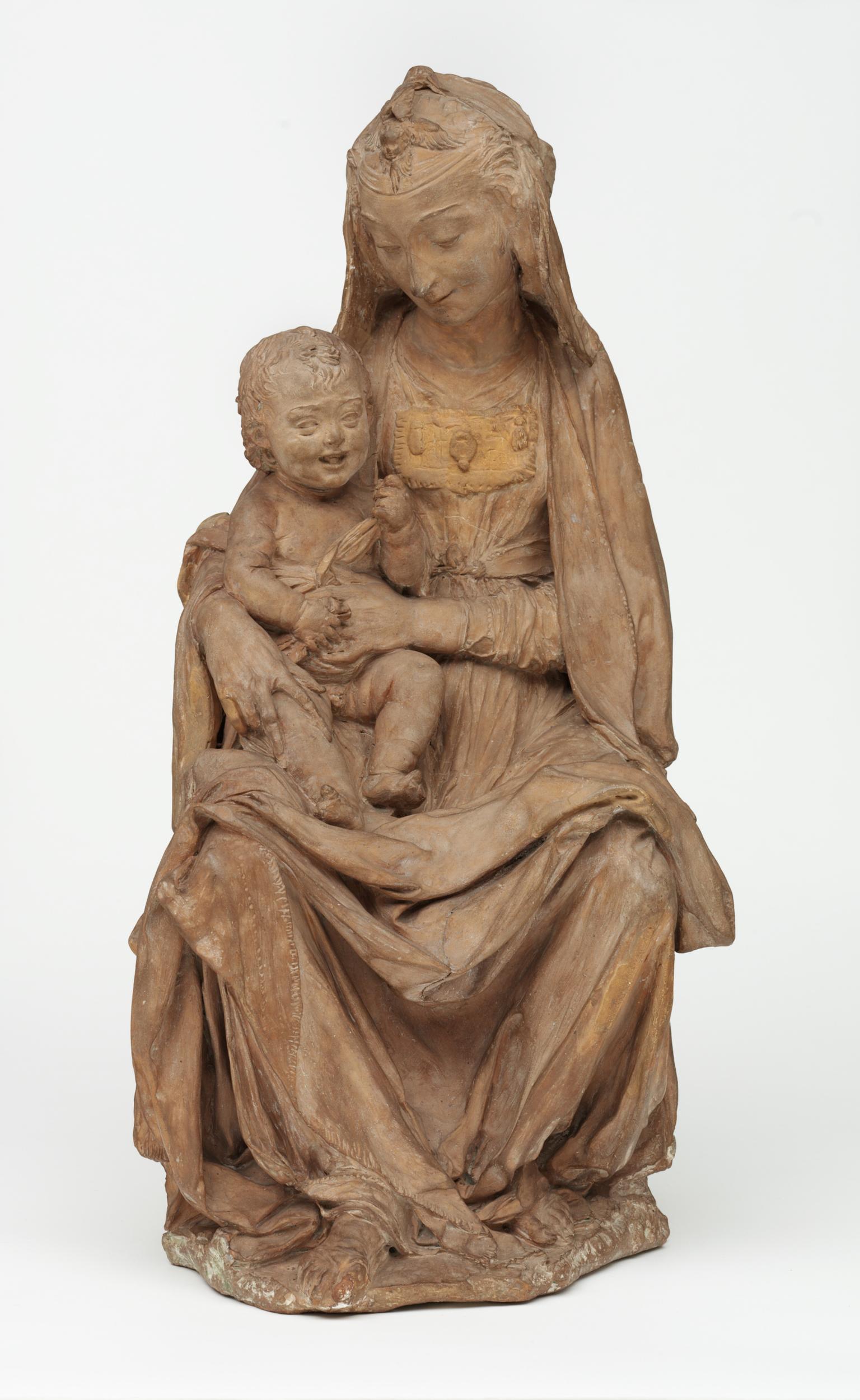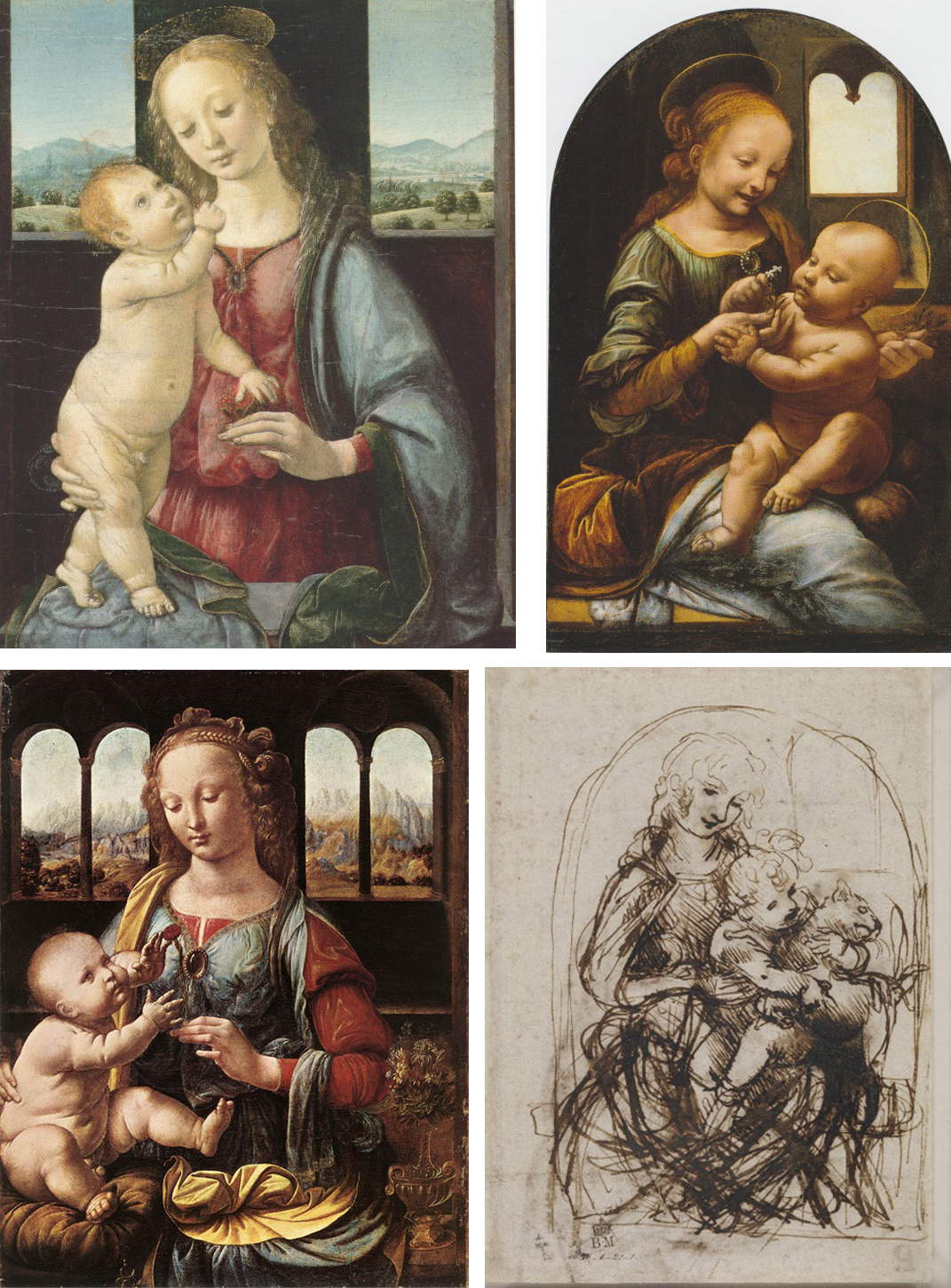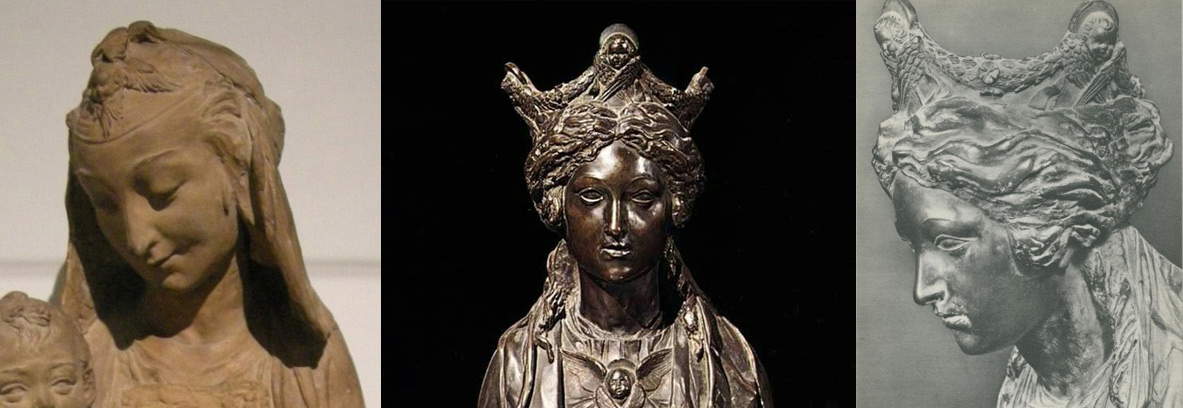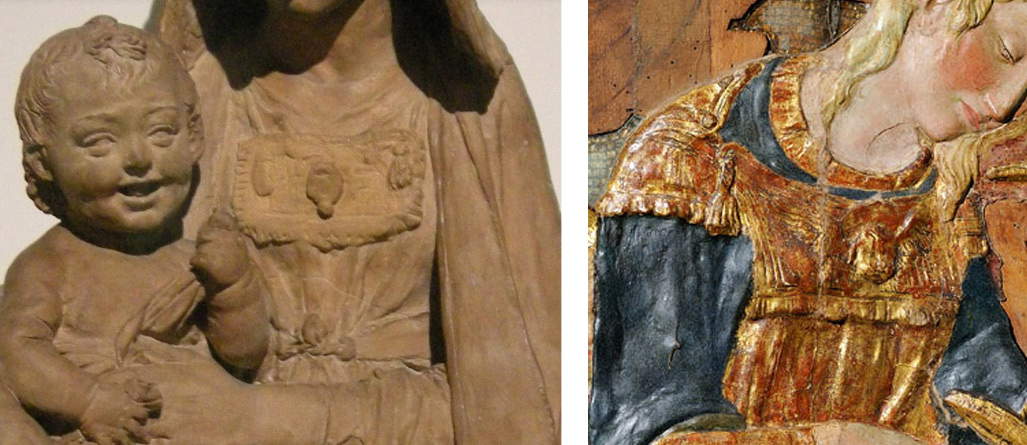A recent paper by Francesco Caglioti drew lattention to a small sculpture housed in an illustrious venue, the Victoria and Albert Museum in London. The statuette, traditionally referred to Antonio Rossellino, could be counted, according to Caglioti, among Leonardo’s early works made in the workshop of Andrea del Verrocchio. The proposal has had a peculiar resonance in relation to the name of the artist whose centennial is being celebrated, and it deserves to be considered carefully like all well-founded hypotheses intended to promote debate, distinguishing it from the sometimes indecent junk that weekly finds space in the press. Caglioti’s intervention is not the result of a sudden enlightenment, but comes from afar: lattribution had been briefly expressed in the context of the studies promoted around the exhibition dedicated to Matteo Civitali (2004), and had been rejected in the Catalogue of the Milan exhibition (2015). While working on the Civitali exhibition, I had found myself with Francesco and other art historians at the same working table, and on that happy occasion I had had the opportunity to add to the esteem for the essays of a colleague of rare competence, the appreciation for the personality of a friendly and helpful young man, far from the stereotyped arrogance of scholars belonging to more recent generations. Wisdom would want that, before intervening on the Vincian theme and on the attribution to Leonardo, I wait to read the Catalogue of the exhibition where the statuette will appear: an exhibition dedicated to Verrocchio that will open soon in Florence, and that promises positive results; but since Caglioti has given an explicit notice of what is a specific topic among those he has dealt with(Venerdì di Repubblica, February 8, 2019), it may be legitimate to express an opinion as of now and to advance some doubts.
 |
| Antonio Rossellino/Leonardo, Madonna and Child (terracotta, 49 x 27 x 24.5 cm; London, Victoria and Albert Museum) |
 |
| From left, clockwise: the Madonna in the Victoria and Albert Museum; Antonio Rossellino, Madonna and Child (Berlin, Staatliche Museen); Luca della Robbia, Madonna and Child (Florence, Galleria dello Spedale degli Innocenti) |
Two preliminary caveats. One does not deny the possibility that Leonardo worked by modeling terracotta: Vasari’s testimony is significant, and I myself have had occasion to observe that the two Angels holding up the Madonna in the Louvre, made in bas-relief, could be identified as two interventions carried out in competition by the master and the pupil.
Secondly, I would like to make it clear that I do not manifest my opinion to support lattribution of the work preserved in the Victoria and Albert Museum to Antonio Rossellino, an artist whom Caglioti certainly knows better than I do: my disagreement is linked to the alternative reference to Leonardo, whose evidence, for painting, is quantitatively restricted and nonetheless well oriented.
My comment, inevitably brief, tends to highlight reflections elicited by the recent anticipation, and may be corrected or reformulated later in a more precise form.
In the London terracotta, whose high quality and strong stylistic hold is not in question, I seem to identify laderence to an image model that interprets an albeit legitimate destination for devotion: the Madonna intervenes mainly to support the Son, and to give prominence to him, who is an unconscious and nonetheless authoritative protagonist; in most cases (as precisely in the London terracotta) she sits on her mother’s lap in perfect balance, and turns outward to the observer, almost a small Pantocrator; two characters, juxtaposed and often even embraced, who nevertheless have distinct roles. This is a winning line around the mid-15th century, which moreover is destined to endure, as a representative work such as Michelangelo’s Madonna of Bruges shows.
In the vincian Madonnas, especially in those of small dimensions and destined like terracotta for private devotion, there is a specific quality that not always lanalysis storico-critica recognizes; a quality that does not necessarily make Leonardo superior to other comprimari, but that characterizes him in terms that should not be underestimated. I am alluding to the propensity for iconographic innovation, which in the arc of the catalog of Leonardo’s paintings often takes on significant dimensions(Virgin of the Rocks, Last Supper, St. Anne to exemplify), but which in a more subtle form also surfaces in works of more restrained (or such in appearance) commitment.
In the Madonnas Dreyfus (Washington), Bénois (St. Petersburg), of the Carnation (Munich), and in numerous drawings, the observer is engaged by the author in a form that dissents from one of the most accepted traditions: Leonardo does not construct the image from the need to entertain a relationship with the viewer, and he discards the most common formulas of presentation; opening an ideal visual box, he induces us to surreptitiously spy on what takes place in an interior where our role is marginal: a mother child and her son, little more than an infant, brush against each other with their hands and gazes, indifferent to our presence, linked by an instinctive relationship involving the exchange of flowers and fruit, or domestic and familiar play with a cat.. hence an explicit compression of the supernatural dimension.
 |
| Clockwise from left: Leonardo, Madonna Dreyfus (Washington, National Gallery), Madonna Benois (St. Petersburg, Hermitage), Madonna with Child and Cat (pen drawing, British Museum), Madonna of the Carnation (Munich, Alte Pinakothek) |
This overriding fact relates to the figural structure and framing of it, and is therefore a general point of disagreement.
Other questions, however, concern two details that identify the author of the terracotta as a sculptor who unabashedly declares a placement in the wake of Donatello and Desiderio, not as a mere imitator, but as a participant in the same mental approach. For that matter, the fact that the putto’s open smile evokes the same names cannot be hushed....
One of the two details that demand attention is the cherub placed on the head of the London Madonna: a light, almost amused interpretation of the winged heads that Donatello adapts in various forms to some of his Madonnas, sometimes just playing with those ephemeral presences, sometimes entrusting them with a higher task, namely witnessing the Virgin’s prophetic abilities (Padua, Altare del Santo). It is a fermatura of the veil that descends on the forehead of the young woman, while the cloak slides back toward her shoulders: the very veil that draws a curve on the forehead clearly recalls typologies adopted in Florence in the early fifteenth century, and which oscillate around the names of Ghiberti, Donatello, and Luca della Robbia. Quite different are the elaborate coiffures that were to be proposed in Verrocchio’s workshop when the teenager Leonardo worked there (posticcios, ribbons, veils, brooches); and the juxtaposition between the terracotta and the female Head in the Uffizi that Vasari qualified as divine turns out to be captious: on the band that encircles the young woman’s head rests not a cherub, but a jewel, a large oval broche that has two halos on either side.
The other significant detail is deduced from a close morphological relationship, within the framework of a methodology of which it is appropriate to be wary, but to which Caglioti resorts in this case with breadth, in clear discontinuity with his other publications. I am alluding to the bib that replaces the simple ligature intended to hold on the chest the flaps of the cloak falling on the back: a formula that had not impressed me in the past, but which today, seeing it again in the terracotta, reminded me of what simpone as an illustrious precedent, namely Donatello’s Madonna of the Rope-makers, datable to the 1540s: a work that has suffered more than one breakdown, but is still legible, and is an example of mixed technique of unscrupulous creativity. In the Donatellian Madonna in the Bardini Museum and the London terracotta, the two artifacts coincide perfectly: the format of the piece, the attachment with two tassels, the presence of an unrecognizable central element, the fringed edge...
 |
| Madonna from the Victoria and Albert Museum (detail) and details of Donatello’s Madonna dell’Altare del Santo in Padua |
 |
| Detail of the Madonna from the Victoria and Albert Museum and detail of Donatello’s Madonna dei Cordai (Florence, Museo Bardini) |
Finally, two words on Caglioti’s juxtaposition between the terracotta and the Panneggi vinciani scattered in various museum venues, about which critics still wrangle: one should be convinced that tugging the various pieces between Leonardo, Verrocchio, Lorenzo di Credi, Ghirlandaio, Fra Bartolomeo... is hardly productive, and only worth giving ephemeral relief to an alleged sagacity of the critic. As I have already said several times it must be acknowledged that the vincian matrix is unmistakable, beyond a marginal, very marginal, difference of hands, and it is important instead to identify the reason that induced Leonardo to choose as support for his Panni rappresi some fragments of linen cloth worn out by use: little cloths used lucidly evoked by Vasari. Probably it was precisely their fragility induced the 30-year-old Leonardo not to include them among those testimonies that he took with him when he left Florence for Milan in 1482: it seems inevitable to recognize them as attestations of study and research expressed in visual form, which were certainly elaborated in parallel with some works born from the association between Verrocchio and Leonardo(Baptism, Incredulity of St. Thomas, Annunciation...), and which it is legitimate to juxtapose with the figures (seated, kneeling, erect) present in them; it is misleading, nevertheless, to present them as preparatory drawings, because this overwhelms leversivo experimental trait. Leonardo chose for some drawings executed with a brush a more yielding support than paper, the linen canvas used, suitable for receiving without smearing the association of very diluted materials, such as bistro and white lead; cloths draped with skilful artifice, not only and not so much to prepare for the pictorial and chromatic impasto, but to enhance the spreading of light through black-and-white solutions under which the body is barely visible; the definition I adopted in a distant time (Abstract Panels) has had much luck. Proofs of work that in most cases remained reserved among workshop materials, avant-garde fragments destined to be short-lived.
We do not know whether it was out of dissatisfaction with the author or their precariousness that those flaps of linen remained in Florence; nevertheless they were preserved at least in part, adopted by qualified connoisseurs (Lorenzo di Credi, Domenico Ghirlandaio, and especially Fra Bartolomeo, to whom we owe reinterpretations of peculiar significance), and preserved by enlightened collectors among whom was certainly Giorgio Vasari. We are left with the obligation to preserve the memory of their flashing novelties, and to count them among the many rivulets of the inexhaustible, restless inventiveness of Vinci.
I conclude with a note of regret concerning the possible reaction of art historians evoked in the article: it may be legitimate to anticipate the rise of doubts and critical notations, but why allude to the seniority of potential censors and even their personal motivations? Better just to divine the authors of the works of art...
Warning: the translation into English of the original Italian article was created using automatic tools. We undertake to review all articles, but we do not guarantee the total absence of inaccuracies in the translation due to the program. You can find the original by clicking on the ITA button. If you find any mistake,please contact us.